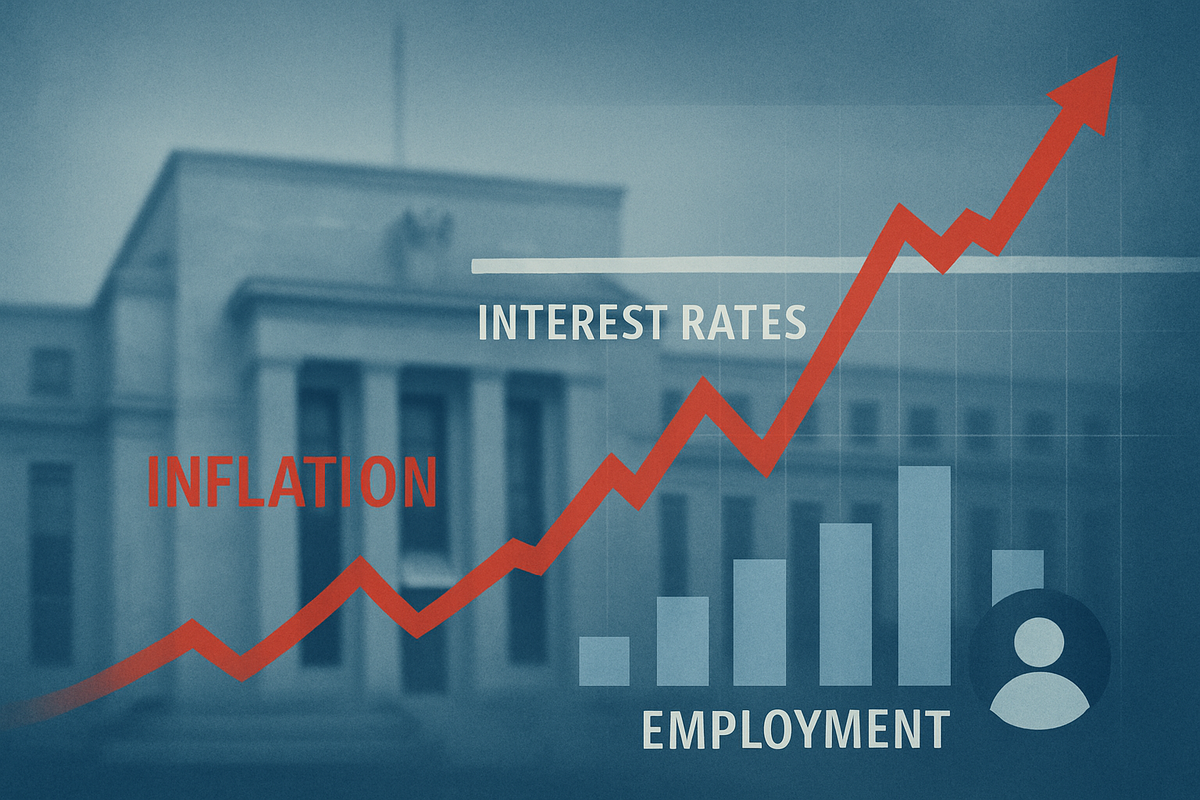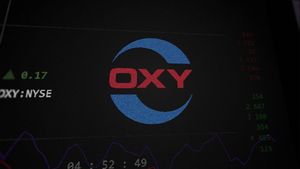
Dallas Federal Reserve President Lorie Logan has emerged as a prominent voice of caution within the Federal Open Market Committee (FOMC), signaling a hawkish stance on future interest rate cuts. Her recent statements, delivered leading up to and around October 2025, emphasize that while a single rate cut was implemented in September as "insurance," further reductions could imperil the Fed's critical mission of restoring price stability. Logan's insistence on a more restrictive monetary policy, citing persistent inflation and a resilient, albeit gradually cooling, job market, sends a clear message to markets: the path to lower rates will be deliberate and contingent on convincing evidence of sustained disinflation.
This hawkish posture from a key Fed official carries significant implications for market expectations and future policy decisions. Investors, who had perhaps anticipated a more aggressive easing cycle, are now confronted with the reality that the central bank remains acutely focused on its 2% inflation target. Logan's views suggest that the "higher for longer" interest rate environment may persist for an extended period, potentially recalibrating asset valuations, corporate borrowing costs, and overall economic growth projections.
Logan's Unwavering Commitment to Price Stability Shapes Fed Discourse
Dallas Fed President Lorie Logan has consistently articulated a cautious outlook on monetary policy easing, even as the FOMC executed a rate cut in September 2025. Her support for that specific reduction was explicitly framed not as the initiation of a broad easing cycle, but rather as "insurance against a more rapid, non-linear decline in the labor market." This nuanced position underscores her belief that the current monetary policy is "only modestly restrictive," implying that the economy can still absorb higher rates without severe consequences, and that premature easing carries substantial risks.
Logan's primary concern revolves around the stubborn nature of inflation, which she argues is "not convincingly on track to return all the way to 2 percent." She points to non-housing services inflation, hovering around 3.4% over the past year, as a significant contributor, estimating it alone could keep overall inflation 30 to 40 basis points above the Fed's target. Furthermore, she acknowledges the role of tariffs in contributing to goods inflation and warns that prolonged uncertainty in trade policy poses an upside risk to inflation expectations, necessitating a vigilant approach to monetary policy.
Regarding the labor market, Logan observes that while payroll job growth has "markedly" slowed in 2025, it remains "fairly balanced" and is "only gradually slowing." She posits that a "modest further increase in labor market slack is likely necessary to finish restoring price stability," and that "it would be appropriate to see a little more cooling in the labor market." This perspective suggests that the Fed is willing to tolerate some softening in employment conditions if it is deemed necessary to bring inflation under control, a stance that could temper expectations for rapid rate cuts driven solely by employment concerns.
The initial market reaction to such hawkish pronouncements typically involves a reassessment of interest rate probabilities, often leading to an upward adjustment in bond yields and a strengthening of the U.S. dollar. Companies sensitive to borrowing costs, particularly those with high debt loads or those reliant on consumer financing, often see their stock prices react negatively. This reflects a broader understanding that the cost of capital will remain elevated, potentially impacting future earnings and growth prospects across various sectors.
Sectoral Shifts: Winners and Losers in a "Higher for Longer" Environment
Lorie Logan's hawkish stance and the potential for a prolonged period of elevated interest rates will undoubtedly create distinct winners and losers across various sectors of the economy. Companies with strong balance sheets, robust cash flows, and less reliance on external financing are better positioned to weather this environment, while those heavily dependent on debt or sensitive to consumer spending power may face headwinds.
Financial Institutions are generally poised to benefit from a "higher for longer" scenario. Banks like JPMorgan Chase & Co. (NYSE: JPM) and Bank of America Corp. (NYSE: BAC) can see improved net interest margins (NIMs) as the spread between what they pay on deposits and what they earn on loans widens. Higher rates also mean increased revenue from lending activities, provided credit quality remains stable. Conversely, rising rates could also increase the risk of loan defaults, particularly in sectors struggling with economic slowdowns, which banks would need to monitor closely.
Real Estate and Construction sectors, including homebuilders like D.R. Horton Inc. (NYSE: DHI) and commercial real estate developers, are typically among the most vulnerable. Higher mortgage rates dampen housing demand, reducing sales volumes and potentially impacting property values. For commercial real estate, increased borrowing costs for new projects and refinancing existing debt can compress margins and slow development. Real estate investment trusts (REITs) could also face pressure as higher discount rates reduce the present value of future cash flows.
Growth-oriented Technology Companies, particularly those that are not yet profitable and rely on venture capital or debt financing for expansion, could experience significant challenges. Higher interest rates increase the cost of capital, making it more expensive to fund research and development, acquisitions, or market penetration strategies. Companies like Snowflake Inc. (NYSE: SNOW) or smaller, emerging tech firms might find investor appetite for speculative growth wanes in favor of more stable, dividend-paying stocks. However, established tech giants with strong free cash flow, such as Apple Inc. (NASDAQ: AAPL) or Microsoft Corp. (NASDAQ: MSFT), are generally more resilient and might even find opportunities to acquire struggling smaller competitors at favorable valuations.
Consumer Discretionary companies, including retailers and automotive manufacturers, could also face headwinds. Higher borrowing costs for consumers (e.g., auto loans, credit card debt) can curb discretionary spending, impacting sales for companies like Ford Motor Co. (NYSE: F) or Target Corp. (NYSE: TGT). However, essential consumer staples companies, like Procter & Gamble Co. (NYSE: PG), tend to be more insulated as demand for their products remains relatively inelastic regardless of economic conditions.
Broader Implications: A Shifting Monetary Policy Landscape
Lorie Logan's hawkish stance underscores a significant pivot in the broader monetary policy landscape, emphasizing the Federal Reserve's unwavering commitment to its price stability mandate, even at the expense of a potentially softer labor market. This approach fits into a wider trend among global central banks grappling with persistent inflationary pressures post-pandemic, suggesting that the era of ultra-low interest rates may be firmly in the rearview mirror for the foreseeable future.
The potential ripple effects extend beyond direct interest rate impacts. Competitors and partners across industries will need to adapt to an environment where capital is more expensive and economic growth might be more subdued. For instance, companies reliant on consumer credit for sales might see partners in the financial sector tighten lending standards. Similarly, businesses planning mergers and acquisitions could face higher financing costs, potentially slowing down M&A activity across various sectors. This could benefit companies with strong organic growth prospects that do not need to rely on external capital.
From a regulatory and policy perspective, Logan's comments reinforce the Fed's dual mandate of maximum employment and price stability, signaling that the latter is currently taking precedence. This could lead to increased scrutiny from policymakers and the public if a significant weakening of the labor market occurs without a corresponding drop in inflation. Historically, periods of persistent inflation have often led to prolonged periods of restrictive monetary policy, as seen in the late 1970s and early 1980s under Fed Chair Paul Volcker. While the current economic context differs, Logan's caution echoes a similar resolve to break the back of inflation, even if it entails short-term economic discomfort. This historical precedent suggests that the Fed is prepared for a sustained effort, rather than a quick reversal.
The debate among Fed officials also highlights potential internal disagreements or varying interpretations of economic data. While some may advocate for more aggressive cuts to support employment, Logan's position suggests a strong contingent within the FOMC prioritizes inflation control. This internal dynamic can introduce volatility into market expectations as investors try to decipher the collective will of the committee, leading to greater uncertainty in forecasting future rate movements.
The Path Ahead: Navigating Persistent Inflation and Economic Adjustment
Looking ahead, the implications of Dallas Fed President Lorie Logan's hawkish stance suggest a period of continued vigilance and potential economic adjustment. In the short term, markets will be keenly watching upcoming inflation reports, particularly focusing on non-housing services inflation and overall core inflation metrics. Any signs of re-acceleration or continued stickiness will likely reinforce Logan's position and further delay expectations for significant rate cuts. Employment data will also remain critical; while Logan indicates a need for further cooling, a sharp, unexpected deterioration in the labor market could compel the Fed to reconsider its stance, albeit cautiously.
In the long term, businesses and investors must prepare for a monetary policy regime that prioritizes inflation control over rapid economic expansion. This could necessitate strategic pivots for companies, particularly those that thrived in a low-interest-rate environment. Companies may need to focus more on operational efficiencies, cost management, and organic growth rather than debt-fueled expansion or aggressive capital expenditures. Innovation that genuinely boosts productivity will become even more valuable, as it can help offset higher borrowing costs and wage pressures.
Potential market opportunities may emerge in sectors that traditionally perform well in higher-rate environments or those less sensitive to economic cycles, such as value stocks, dividend payers, and certain segments of the healthcare or utilities sectors. Conversely, challenges will persist for highly leveraged companies, speculative growth stocks, and interest-rate-sensitive industries. Scenarios could range from a "soft landing" where inflation gradually subsides without a deep recession, to a more challenging "hard landing" if restrictive policy triggers a more significant economic downturn. Logan's comments suggest the Fed is willing to risk the latter to ensure price stability.
Ultimately, the path ahead hinges on the evolution of economic data and the collective response of the FOMC. Logan's voice serves as a crucial reminder that the fight against inflation is not over, and the Fed is prepared to maintain a restrictive stance for as long as necessary, even if it means foregoing the immediate gratification of lower rates.
Wrap-up: A Sobering Outlook for Rate Cuts and Enduring Fed Resolve
Dallas Fed President Lorie Logan's recent pronouncements represent a significant and sobering recalibration of expectations regarding the trajectory of interest rate cuts. Her consistent emphasis on stubborn inflation, particularly in non-housing services, and the need for further cooling in a still-resilient job market, underscore the Federal Reserve's unwavering commitment to achieving its 2% inflation target. The key takeaway is clear: the Fed is unlikely to embark on a rapid easing cycle, and the "higher for longer" narrative is gaining stronger traction within the central bank.
Moving forward, the market will operate under the shadow of a Federal Reserve that is prioritizing price stability above all else. This means investors should anticipate continued volatility as economic data points are scrutinized for any evidence that might sway the Fed's hawkish members. Companies will need to adapt to a higher cost of capital and potentially slower economic growth, necessitating a focus on financial discipline and robust business models. The era of cheap money appears to be firmly behind us, ushering in a new phase where capital allocation decisions will be more critical than ever.
The lasting impact of Logan's stance and similar sentiments from other Fed officials will likely be a more disciplined approach to monetary policy, one that is less reactive to short-term market fluctuations and more focused on long-term economic stability. What investors should watch for in the coming months are not just headline inflation numbers, but also underlying components of inflation, wage growth, and the overall health of the labor market. Any signs that inflation is truly, convincingly, and sustainably moving towards the 2% target will be the primary catalyst for a shift in the Fed's cautious posture, but until then, prudence remains the guiding principle.
This content is intended for informational purposes only and is not financial advice





